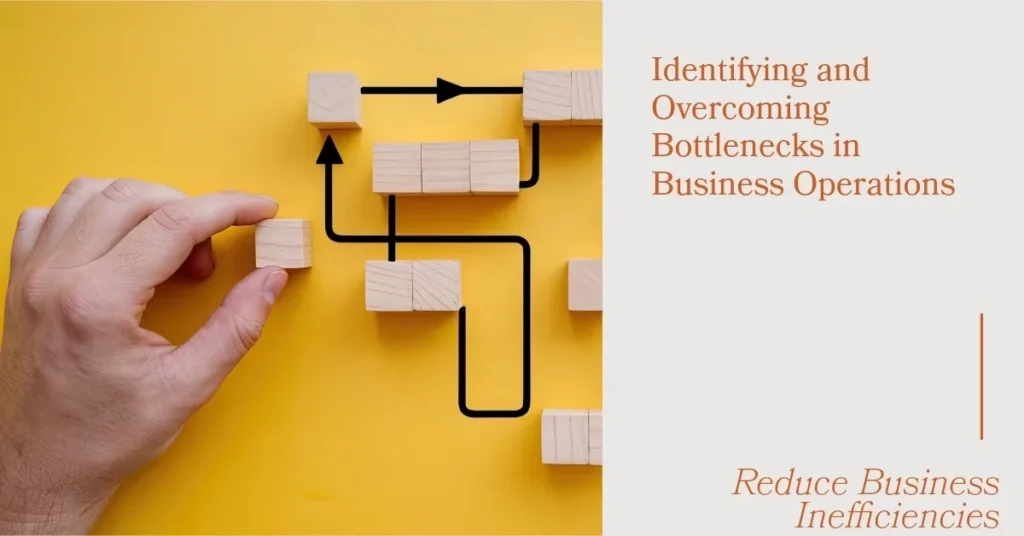A Theory of Constraints (TOC) Perspective.
Have you ever felt like your business keeps hitting invisible roadblocks—tasks get delayed, projects stall unexpectedly, and inefficiencies create unnecessary stress and lost revenue?
These aren’t just random issues; they’re symptoms of underlying constraints in your operational flow.
According to the Theory of Constraints (TOC), your business’s growth and productivity are directly limited by specific bottlenecks—constraints—that hold you back from reaching your full potential.
In this blog, I’ll show you exactly where delays, interruptions, and inefficiencies commonly appear in your business operations using TOC insights, empowering you to systematically address and overcome them.
What is the Theory of Constraints (TOC)?
The Theory of Constraints, introduced by Eliyahu M. Goldratt, is a management approach focused on identifying the single biggest factor (constraint) limiting your business performance. It emphasizes that real improvement occurs only by addressing this key bottleneck directly—rather than scattering your attention on less impactful areas.To apply TOC effectively, first clearly understand where these constraints usually appear in your business’s daily operations.
Common Business Flow Constraints: Where Delays, Interruptions, and Inefficiencies Appear
1. Lead Generation and Sales Pipeline
- Common Issues: Slow response times, unclear lead qualification, inconsistent follow-up.
- Impact: Potential clients lose interest, wasting marketing resources and limiting new revenue opportunities.
- TOC Insight: Constraints at this stage choke your entire pipeline, limiting growth potential downstream.
2. Client Onboarding
- Common Issues: Miscommunication around expectations, slow response after signing, missing details causing start-up delays.
- Impact: Client frustration, damaged trust, cash flow delays.
- TOC Insight: Constraints in onboarding directly limit your ability to scale profitably and maintain satisfied customers.
3. Service Delivery & Operations
- Common Issues: Scheduling errors, mismanaged resources, poor team communication causing service delays.
- Impact: Rising operational costs, missed deadlines, decreased client satisfaction.
- TOC Insight: Operational delays limit your total capacity, harming profitability and customer loyalty.
4. Communication & Decision-Making
- Common Issues: Unclear communication channels, slow approval processes, lack of accountability causing confusion.
- Impact: Team confusion, duplicated efforts, significant wasted time.
- TOC Insight: Inefficient internal communication and slow decision-making processes often form hidden bottlenecks, silently draining productivity.
5. Administrative & Financial Processes
- Common Issues: Slow invoicing, delayed payments, cumbersome financial tracking.
- Impact: Limited cash flow, inability to invest in growth, operational stress.
- TOC Insight: Administrative bottlenecks typically surface as businesses grow, quietly impacting overall business performance.
Real-Life Scenario: A Landscaping Business Constraint
Consider a landscaping business owner personally managing every customer inquiry and directly scheduling every crew member’s daily work. Initially, this felt ideal—customers appreciated the personalized touch, and immediate scheduling adjustments seemed straightforward. However, as demand increased, the owner quickly became a significant bottleneck:
- Delays: Customers waited too long for responses due to the owner’s limited availability.
- Interruptions: Crew members constantly paused work awaiting updated scheduling decisions from the owner.
- Inefficiencies: Project timelines were missed, profitability decreased, and frustration mounted internally.
By applying TOC, the owner identified the personal management of all scheduling and client interactions as the primary constraint. They took clear, actionable steps to empower supervisors with scheduling responsibilities, developed standardized processes for handling new customer inquiries, and clearly defined roles and decision-making criteria for their team.
Important Note: While it’s critical to delegate routine interactions to free yourself from becoming a bottleneck, owners must still retain oversight of key strategic relationships. Owning major client relationships is important, but the key is finding balance and empowering your team to handle day-to-day operations independently.
Applying TOC to Identify Your Own Flow Constraints
Follow these practical steps to pinpoint where your business experiences delays and interruptions:
Step 1: Map Your Core Processes
Clearly document each step—from lead generation and sales through service delivery and billing.
Step 2: Measure and Identify Delays
Track how long each step takes. Identify exactly where tasks get delayed or repeatedly interrupted.
Step 3: Ask Diagnostic Questions
- Where do delays repeatedly occur?
- Who is typically involved during these delays?
- What critical information or resources are consistently missing or delayed?
Step 4: Prioritize and Address the Biggest Constraint
Identify the most impactful constraint first. Addressing this singular constraint creates immediate, measurable improvement.
Practical Steps for Addressing Constraints in Your Landscaping Business
Here’s a clear roadmap for immediately applying TOC in your landscaping or related business:
- Create Visual Process Maps: Clearly define each step and handoff in your service delivery process.
- Empower Team Members: Train supervisors and key staff to manage daily scheduling and basic customer interactions.
- Develop Clear Communication Channels: Standardize how and when communication should occur to reduce interruptions.
- Establish Documented Decision Guidelines: Create guidelines allowing team members to make clear, quick decisions without always needing direct owner input.
- Review & Adjust Regularly: Conduct periodic reviews of processes and constraints, adapting your workflow to maintain optimal efficiency.
Conclusion: Unlock Sustainable Growth with TOC
By identifying and strategically addressing the constraints causing delays, interruptions, and inefficiencies in your business, you can dramatically enhance your ability to scale and thrive. The Theory of Constraints gives you a clear, structured framework to pinpoint precisely where your business is stuck—and systematically remove those obstacles for good.Imagine the possibilities when your operations run smoothly, your team feels empowered, and your customers experience consistently excellent service.
Ready to Identify and Remove Your Business Constraints? Schedule your complimentary consultation today, and together we’ll clearly pinpoint where your business is being held back—and how to systematically unlock your growth potential.
Your success shouldn’t be limited by hidden constraints. Let’s clear the path forward together.👉 [Schedule Your Complimentary Call Now]

